#CAD outputs
Explore tagged Tumblr posts
Text
#Engineering model services#Maadhu Creative#high-quality prototypes#budget-friendly solutions#CAD outputs#concept precision#engineering excellence#prototype testing#engineering projects#design precision#creative solutions#project elevation
1 note
·
View note
Note
The fucked up dynamic between Hyden and Ambroys is kind of sexy ngl. You've said you're not a shipping person so not trying to push an agenda here or anything, just gotta say thanks on behalf of the freak likers. I also feel this way about a certain rat and Hyden. You guys are so good at characters and making these awful and compelling dynamics.
Hahaha well obviously I think their dynamic is great fun to play with too. Whether it be their full-on enemyship in Amaranthine or them bonding over being rich cads in other settings, they're tons of fun in their complementary awfulness.
Same with Hyden and Theo. I think their dynamic, built on childish fantasies, misplaced loyalty and manipulation, is also delightfully fucked up and headed for disaster, which is the best course for any fictional relationship.
I find it a little funny that I seem to have garnered a bit of a rep as a shipping-hater. It's not so much that I see no appeal, but to me it is an occasional insubstantial treat, one that I dip into every so often but find unfulfilling as my main artistic output. When I see or hear others talk about how much they love shipping and don't read anything but romance, it sounds like someone saying they eat cookies and candy corn for every meal. I don't know how a person would be satisfied with that. :P
#text#also people want that shipping candy so bad#if i indulge that too often i fear people would want nothing else#i definitely know people come out of the woodwork in a big way whenever there's a whiff of kissing or physical intimacy haha#but like i said... drawing that all the time would bore me#i need the dolls to fight and suffer and die and also make fools of themselves in my play pretend games#also wear outfits... i do like making the barbies play dress up
71 notes
·
View notes
Note
Can I ask for Cad Bane x FTM reader hcs? SFW and NSFW, no limits. Maybe a fic if you're in the mood? I'm on anon because I'm shy.

Hello, anon! Hopefully, you will like this. I did my best. This is my first try at a ftm reader insert! Feedback, likes, comments, reblogs are all appreciated if you feel they are deserved! I will take correction and advice for THIS FIC ONLY. It's important to listen to the target audience. <3
---
A Good Story
Cad Bane x Trans Male (AFAB) Reader
Summary: You are a bored weapon's merchant on Fondor, a planet located near Devaron; Cad Bane has a date with Bolla Ropal at the Jedi temple and is in the market for something special—but you have the nerve to try to rip him off. Bane has money, and you're in need—surely he won't bat an eye at the high price tag?
Warnings: NSFW / 18+ for double-penetration and finger-fucking. Bane goes in both ways. I also make use of the words cunt and dick in relation to genitalia. There is a mention of the reader wearing a binder.
Word count: 4.5K +
Ao3

God, you were bored.
Fondor was a planet with little to do save for your dead-end job, lonely nights spent nursing bottom shelf brandy in some dingy, hole-in-the-wall cantina, unable to escape the smells of the shipyard. It reeked of tibanna, oil, tar, and rust, the odors having long since taken up residence in the vibrissae of your nose, lingering there, giving you no short reprieve—even after a shower.
Still, that wasn’t even your work. The Clone War was getting closer to your rocky home world with every passing day. It made sense. You lived in the Colonies, situated within the Inner Rim; threats from the Separatists loomed just beyond your backyard, populated with important trade routes.
It appeared Count Dooku, the leader of the Confederacy of Independent Systems, had the idea that Fondor should join his ranks. The Republic now vied for your attention but talks led nowhere—no one wanted to join Dooku willingly.
That’s where you came in.
Well, sort of.
“Good choice,” you praised the buyer of a DL-22 blaster pistol, the man placing the sum of five-hundred credits into your outstretched hand.
“Best to be armed nowadays,” he said dismissively, looking down the barrel of his newly acquired, high-priced toy.
The DL-22 was designed by BlasTech Industries and packed quite a powerful punch. A high-quality focusing crystal had been utilized by the weapon’s manufacturer to increase the damage output of the pistol’s blast bolts. This resulted in a reduction of the gun's stun setting, but most found the exchange to be well worth it.
“Can I interest you in any extra power cells? Carts? It only comes with the one up front.” If you had learned nothing else from this job, it was that your boss demanded you try to upsell every customer who walked in off the street. You resented him for that, but you also liked the extra commission when things worked out.
“Nah, got some back home.” The man was already holstering his purchase, aiming to walk out the door.
“We have a three rotation return policy,” you said, more as an afterthought. The man nodded he understood, then left.
You sighed. You wondered how much longer until your next customer. Sometimes, hours passed, and you would not see a single soul. It wasn’t that you minded, but the time seemed to drag on endlessly. There was only so much you could do on your datapad; scrolling through newsreels after a while became demoralizing.
You had just begun to read an article about Wilhuff Tarkin, the governor of Eriadu, when the door chimed. You found a stopping point at the end of the next paragraph and looked up, a habitual, customer-friendly smile having crept across one side of your face.
Then, it fell clean off.
A Duros strolled into your shop, the echo of his boots filling your ears as he sauntered across the duracrete floor.
That was the word for it, sauntered—he was strolling with what could only be described as a kind of confident detachment, a wide-brimmed hat hiding the fine details of his disposition, though you saw he was sporting the tiniest hint of a snaggle-toothed smirk.
You cleared your throat. “Hello, welcome.”
He said nothing, coming ever closer, causing the skin on the back of your neck to prickle. He seemed familiar, somehow, though you couldn’t quite place it. His short walk ended as he set the pads of all ten of his fingers down flat across the countertop, just to the right of the register—you wondered if he meant to rob you blind.
You allowed your eyes to travel the length of his skeletal frame, taking in his well-worn ensemble; the tightness of the leather; the glint of the metal accoutrements; the creak of the material as he tipped marginally forward, putting all his weight on one leg as he bent his knee, shifting his stance to one that was more casual.
Then, his chin rose. The face that was revealed startled you to the point you gasped. You sucked in a quick inhalation of air, filling your lungs before you refocused, this time on his eyes.
They were two austere, gleaming red jewels inlaid among the bluest scales—severe in appearance, surrounded by scars of varying depth and length.
Fuck; he was handsome. More attractive than he had any right to be. And his mouth—you suddenly couldn’t take your eyes off it, or off the two tapered fangs that peeked out at you from lips that were dry and cracked. But you thought it didn’t matter—you would kiss those lips if he asked you t—
“—In de market fer somethin’ special.” He interrupted your train of thought for another to take its place. His voice was like something you had never heard before, rough while at the same time smooth and sensual; he was as easy on the ears as he was on the eyes, and he had your full attention.
“Oh?” you asked, doing your utmost to stay calm, to come off as nonchalant. “And what might that be?” you inquired, genuinely curious, though hoping he wouldn’t surprise you with a request that was outside your wheelhouse. You realized that even though you did not know his name, you would hate to disappoint whoever this man was.
“Projectile launcher,” he started, pushing off the counter to stand up straight. He was a tall drink of water, enough to quench your thirst, though staring at him seemed to have the opposite effect. You felt as if you had never been this thirsty in your life. “Fer a cortosis shot.”
“Cortosis ore?” You felt the question had been a dumb one on your part, no sooner than you had asked it.
The Duros’ brow twitched, raising upward toward one side. He folded his arms and stared you down with those cold, crimson eyes, wondering what the hell else you thought he might be referencing.
“Problem?”
“What? No. No, we uh—” You released his heady gaze to glance back down at your datapad with some reluctance. “We have several weapons in stock that might suit your needs.”
You pretended to sort through your inventory, but you had just begun a search for Duros—ones that might be in some form of media, or on the news.
“Yeah? Like what.”
Why was it suddenly hard to swallow? Why did you feel so warm? You felt the blood rushing to your face, unable to curtail the onset of what was presumably anxiety, your finger adeptly scrolling through the holofeed as fast as the device permitted.
“Depends on what you’re after—something compact, something a little flashier—” Your eyes widened as you caught sight of a report some few days back; this Duros had been the one involved in a break-in at the Jedi temple. An APB had been put out for his capture—Cad Bane.
He was considered to be armed and dangerous. That much was obvious. But why was he here now?
“Somethin’ good ‘nough te disarm a Jedi,” came his reply. You looked back up and returned your datapad to the counter. His gaze was measured, calculating.
“Find anythin’ interestin’ on dhere?” the bounty hunter growled, eyeing you with evident suspicion. You panicked, pressing a button alongside the glowing screen so that it would blank out and go dark.
“Many ... something's,” you said awkwardly. You may have been scared shitless, but you weren’t stupid. Not entirely. Stupid enough to use this situation to your advantage, though, or at least stupid enough to try.
“A-a Jedi?” you inquired, trying to keep the fear from your voice, but ultimately changing the subject. You hoped against all odds he hadn’t seen what you had last been looking at.
“What Ah said,” he snapped. “Show me.”
“Right! Sure!”
You scampered to the back, looking amongst the shelves for the blaster you knew you had in stock. You used this moment not only to find something that might please the Duros, but also to catch your breath—your heart was pounding as you came to terms with who was waiting for you, yet you knew the man had money. Lots of it.
“Cad fucking Bane,” you whispered to no one in particular, staring blankly at a row of pistols, your vision nearly blurring as you practically disassociated—unable to believe that the galaxy’s most notorious hired gun had just waltzed into your meager storefront, and on a day you happened to be working.
“What?” came a low note in your ear.
You overtly jumped, turning around, terror-stricken and at a loss for words.
The bastard was right behind you! How had he done that? How did you not even hear him approach?!
“Shit, man! Don’t—don’t karking do that!” you said without thinking. The Duros narrowed his eyes, withdrawing a toothpick he had on his person somewhere, retrieving it from out the corner pocket of his coat.
“Do what,” he asked flatly.
“Sneak up on me!” you panted, gasping for air.
“Wastin’ my time,” he rasped, placing the scrap of wood between his teeth. It was plain as daylight he was losing his patience, yet you had only exchanged a few scant words.
“OK, look. I’m sorry—it’s—it’s not every day Cad Bane walks into my shop.”
“Well, dhen teday’s yer lucky day, innit?” he asked, sarcasm lacing his tone, the Duros speaking from around the inserted toothpick resting gingerly betwixt his fangs.
“Yeah. Yeah, I guess so.” You forced yourself to calm by thinking one thought only—if he wanted you dead or to hurt you, he already would have.
“Won’t ask again—show me,” he commanded.
You walked toward the back row of shelves without another word; the Duros followed. You stretched out your arms, gathering what you had been after—a top of the line slugthrower, a weapon that used kinetic energy to fire solid objects, metal objects—you hoped it was what the man was looking for.
You turned around and presented it to him; Bane lifted it straight out of your hands. He turned it this way and that, giving it a thorough examination, extending it as if meaning to take a shot. He pulled the trigger, though it wasn’t loaded, then shifted his gaze toward yours—you had been staring. “How much?”
Now was your chance—would you dare try to coax a little more out of him than the asking price? Maybe money was no object to a person of his wealth and status. It was no secret Bane worked for the highest bidder. Everyone knew his was the highest price tag and that he was capable of any job should you pay him his just dues.
You idly wondered who had paid him to break into the temple back on Coruscant…
“Ye slow?” Bane snarled, flashing his teeth. You had zoned out again, making yourself look more or less like an idiot three times now.
“Two thousand,” you shot back. This particular model was only worth twelve hundred.
The Duros gawked at you, arched a brow, then outright laughed a dry honk of a laugh. “HA! Ye must be dumber dhan kriff te think Ah’m payin dhat.”
“Take it or leave it,” you bravely replied, although you wished you hadn’t for what came next.
The hunter’s eyes narrowed for the second time within your presence. He shoved the shotgun back into your arms, forcing you to stumble backward. He removed the toothpick he had been gnawing on to place it against the underside of your chin. Your own eyes widened as you swallowed down your excess spit.
“Ye tryin’ te pull one over on me, son?” Bane asked, his voice riddled with animosity, betraying his lack of self-restraint.
“I—what? N-no—” you managed, hardly able to look at him directly.
Still, this sudden closeness, the smell of the Duros—it was intoxicating. Despite his piss-poor attitude, his leering was doing things to you. Things you could not explain except that it was your animal brain enlivening, as were your loins, much to your embarrassment.
Then, the Duros smiled. It was a shit-eating, nefarious sort of smile. A smile that made your blood run cold and your groin catch fire. “Dhat fear Ah smell, er somethin’ else?”
Your cheeks burned, though you would recover, finding your obstinance somewhere deep down inside you. “I don’t know what you’re talking about, that’s the asking price,” you lied, the pounding of your heart thrumming in your ears.
“Ah know what dhis shit’s werth, and it ain’t dhat,” Bane hissed, pushing the sharp point of his toothpick more succinctly against you, the scars and lines that were etched into the flat of his face close enough to touch, close enough to kiss.
“Make ye a deal, since Ah know ye wanna fuck me,” Bane taunted savagely.
“W-what?!” you asked surprised, thrown off by his candidness. Was he a mind reader? Could he sense your desperation?
What you were not privy to was that Bane was in a rare, good mood, having just stolen a holocron out from under the noses of half a dozen Jedi, making out with a new ship and a payout that was triple. Normally, he might just shoot you for trying to pull a fast one, but there was something about you that intrigued him—maybe it was the brazen way in which you had tried to overcharge him. It was something he might do, after all.
“Pay ye what it’s werth, and Ah’ll give ye somethin’ te tell yer friends,” Bane snickered. “If ye got any,” he nastily teased, adding insult to injury.
“I … I have friends,” you defended, giving him a once over. You felt entirely too hot, your body having betrayed you for wanting this horrible, cutthroat man.
“Dhat mean we have ourselves a deal?” His grin returned, toothy and sadistic.
“I’ll drop it to twelve … but only if you can make me cum.”
Were you crazy? Had you actually gone temporarily insane?
Not only did the Duros’ rostrum crinkle in a twisted sort of delight, but the corners of his horizontal, ovate eyes did as well, his malicious smirk reaching to the tops of his gaunt cheeks.
“Ye got guts, Ah’ll give ye dhat—time te rearrange ‘em,” he stated cattily, flicking his chewed-up toothpick onto the floor.
You almost laughed, but thought it the wrong choice, not that you had much time to think through things to begin with, Bane on you faster than a womp rat up a drainpipe now that you had given your express consent.
The Duros snatched the slugthrower back out of your hands, tossing it down to join his toothpick on the ground, the shotgun landing with a clatter as he grasped you by the collar of your shirt, shoving you back against the row of shelves behind you.
“Turn around and spread ‘em,” he advised.
“Wait! That’s—that’s not exactly what I’m into,” you dared, taking a deep breath.
The hunter canted his head like an inquisitive took’, looking at you like you had just grown a second head yourself. Yet, he did not take yours clean off. Instead, he posed a question.
“Ye exspectin’ Ah be gentle?”
“No, just—go easy.”
“Easy …”
Bane hummed a sound, as if rolling over what you had said in his mind. Then, he closed the gap between you, pressing himself up against your aching loins; you could feel the outline of the Duros through his distressed jeans. It was … unusual, to say the least.
“Have it yer way.”
Bane moved toward the button at the top of your pants, dexterous fingers undoing the clasp within seconds. You found yourself holding your breath as one large hand slipped between the folds of your boxers, trying not to dwell on what he might think once he realized—
“Hold on!” you interjected, the Duros’ creeping digits stopping just below your belt line. He bared his teeth in annoyance, but it couldn’t be helped. You had one more thing to tell him.
“Tryin’ my patienccce,” Bane sizzed, his free hand wandering up to clutch your throat, holding your head steady as he gazed penetratingly into your eyes.
“Just thought maybe you should know that I—”
“Cahnnit,” the hunter snapped, the Duros’ sizeable fingers once more taking to movement as he pressed one between the folds of your labia. “Already know,” he informed you in a matter-of-fact tone. “Think Ah ain’t never karked a man with a cunt before?”
Bane snorted out a laugh as your breath caught in your throat, the Duros guiding his index finger to gently fondle the growth between your legs, “dhis ain’t my ferst rodeo, kid, now try te relax before ye piss me off.”
You nodded, unable to peel your eyes away from his, the brim of his hat steeping you both in shadow as you did the unthinkable, pushing up off your toes in an attempt to kiss him.
The hunter pushed you back with the point of a finger, then dipped down low at the same time he dipped inside you, gathering a measure of your slick. His thumb worked your dick in concentric circles as one large, elongated forefinger gave you something to mull over, the Duros leaving you gasping for air at the thought he hadn’t even stuck his cock inside you yet.
“Feel good?” he asked, as if he cared, as if might actually be concerned for how you were feeling. Whether or not it was an act wasn’t the point, just glad enough that he had taken the time to ask.
“Yes,” you breathed, your mouth so close to his, yet he had still refused to kiss you. It was almost unbearable, Bane immersing his finger into your tight hole to his third knuckle, curling it at just the right slant to apply the perfect amount of pressure against your anterior walls.
“Now… why don’t ye be a good boy and turn around fer me,” he coerced, though not so demanding as last time. His good boy sent your mind reeling; you were already lost to him, unable to move, unable to speak, riding the high that was Bane finger-fucking you in the back of your workplace—shit—if anyone walked in…
You tried to obey him, but your body was not cooperating by no fault of your own. You had not felt this good in ages, the intense pleasure you were experiencing outweighing the frightening prospect of being spied having relations by your immediate supervisor or any other customer.
“Need a lil’ help, do ye?” Bane asked, the wet squelch of his finger vacating your insides causing you to heavily blush. Though incapable of speech, you were past the point of caring, letting the Duros ultimately have his way with you against your better judgment. Maybe you were naive for thinking he wouldn’t hurt you, but things seemed to now be fully out of your control, allowing your unconventional lover to rotate your human form however he so wished.
You felt your pants slide down towards your thighs; your boxers were next, falling past the crack of your ass, Bane once more pressing himself firmly against you as you heard a shuck, a rattle of metal, and the peeling of what sounded like thermoguard being pried apart by its seams.
“Which hole ye want it in?” Bane thought to ask, perhaps assuming he was being considerate. Before you could answer him in any way, shape or form, he decided for you. “Both,” he chortled.
“What do you—” you began, but were quickly silenced, something slick and slimy finding its way up your slit while another something knocked on your back door, though the Duros was kind to you in that its introduction was gradual, his cock’s tapered tip slim and pliable, enabling it to slip inside your ass in tiny increments.
You realized his species must self-lubricate; you thanked the Whills. Even though it felt beyond compare, you knew you would be sore by this time tomorrow.
“Look how good ye take it,” Bane lauded, though you could not tell if he was being sincere. You were left to seethe through your teeth, hissing tiny breaths, Bane only moving insofar as you could stand. He seemed to have a second sense for this, though the other of his cocks pushed up inside you; they were obviously stacked, these dual phalli, ribbed in all the right ways; pressing into you at all the right angles.
“Fuck,” you exclaimed, panting like a man who had just run a marathon, moans of pleasure escaping your throat as a feeling of ecstasy mixed with a good kind of pain traveled its way down your spine, spreading outward from its origin point at the base of your skull.
“If ye insist,” Bane drawled, his bony hips thrusting themselves forward to where you belted out a sound that pleased him, Bane laughing a vicious little laugh as he reached around you, taking up the sizable nub that rested between your thighs.
“Louder,” he instructed, wanting to hear you sing, wanting to feel you writhe under him as he fucked you alongside an inordinate amount of deadly weaponry.
You pressed your hands flat along the shelves in front of you, digging your fingers into the wood. You would leave deep rents by the end of your time here, grasping for purchase as he began to rail you harder.
You moaned again, louder as he deemed it necessary. “Bane,” you praised, holding on for dear life as he gave you a good old-fashioned reach around while doubly penetrating you from behind. The overwhelming number of sensations you were feeling had your brain short-circuiting, the Duros swaying you toward an almost gentle release.
You reached a peak, biting down against your own hand, your dull, human teeth leaving their imprint across your flesh, damp with sweat, proof of pleasure rendered.
“Ain’t gettin’ off so easy after all,” Bane crooned spitefully in your ear. You momentarily wondered if he was referring to your orgasm, until you understood—he didn’t plan on stopping just because you came. He kept on rocking into you, over and over, simultaneously hitting your G-spot while stimulating the nerves in your anus, causing you to cum a second time.
Your body quaked beneath him, his thin hips enough to bruise you, to tenderize the meat of your rump as he gripped either side of your haunches, squeezing tight—you were glad he had never once groped you through your binder.
You weren’t entirely sure why you had agreed to this—especially without protection—but here you were, and you realized you had no desire to stop it from happening.
“Want it,” you croaked. “All of it.”
Bane obliged, discharging a thick, gelid substance into your cunt, followed by another round coating every inch of your inner walls. He did not hold back as was your preference, things only once more becoming impersonal when he raised up off your back, his rail-thin chest having been resting upon you, the rapid fluttering of his heart felt through the sparse fabric of your shirt.
It was a unique feeling, causing you to shiver reflexively, observing that his cocks weren’t by any means synchronized in their release. You only now began to wonder about his anatomy; what purpose it served to have two for a Duros, though you did not have one complaint regardless, and he had not questioned you about yours.
Bane finished himself off, then withdrew from you with a resounding, pressurized suck, every rib and crest felt by your sensitive loins on his way out.
“Hope ye got a ‘fresher ‘round here,” he quipped.
---
Bane had tucked himself away and waited for you, but you had the inkling he wouldn’t have stuck around had he not needed you. In fact, he didn’t—he could have easily walked out of there with the shotgun in tow, but he seemed to be a man of his word, extending an arm to offer you up his credit stick.
“Ye run it fer twelve, like we agreed.”
You nodded; kept quiet. You processed his payment, noting that the name that popped up on your screen was not his own.
“Werhl Tahoon?” you asked, quirking a brow.
“Ah really gotta explain dhat te ye?” he asked, visibly annoyed.
Of course, he didn’t. He was a wanted man, a criminal. He had assumed names, false identities … who knew how many bank accounts he had, and on which planets. All that mattered was that his money was good, the twelve hundred credits being withdrawn and added to your bosses' coffer.
“Sounds like the name of some nerfpoke from a cheesy holo—”
His glare shut you up; you handed him his card, having previously retrieved the slugthrower from off the floor on your way back out. You gazed at his hand as he plucked it from yours, thinking about the way those lithe fingers had been inside you, how you had felt every knuckle, how you would dream for years to come about this Duros, though he would most likely forget about you as soon as he departed from your shop.
You flinched as he once more snatched you by your collar like before, those same, agile fingers tightening around the cloth as he reeled you in, bringing you within mere centimeters of his face.
“Be in yer best interest naht te try and rip people off—next time, ye may just get pumped fulla lasers rather dhan gettin’ plugged.”
He kissed you roughly on the mouth; you felt the scrape of a tooth, its sharp point grazing your skin. It was more than you could have ever hoped for.
Then, he released you; he left you gasping for air. He seemed to have that effect on you. The idea that he was leaving was suddenly too much; unthinkable, even as he strapped the slugthrower across his back and tipped his brim.
Like an idiot, you called out to him as he made his way, taking him in one last time—the way his duster moved fluidly around him, the way his hat enshrouded him.
“Where are you going?” you asked, as if a jilted lover, as if you meant something, as if he might have the decency to tell you anything about his plans or about himself.
He turned on the heel of his boot, one arm lifting as his hand dug into the confines of his coat. He withdrew an object—cube-shaped, many-sided, and covered in intricate designs. You didn’t know what it was, but you thought it must be rare and beautiful, like him, and blue to boot.
In realty, it was a stolen Jedi holocron, filled with the names of all the galaxy’s up-and-coming Force-users, the future of the Jedi Order—and he had been paid to nick it from the Archives by one Darth Sidious.
Bane smirked as he deigned to answer to the likes of you.
“Devaron—got a Jedi te catch,” he snickered.
Devaron … it was a planet not too far from here, within the Colonies, bordering your sector.
You thought to comment, but then he was gone, leaving behind what he had promised—a good story to tell your friends. God, what you wouldn’t give to go with him, out on some grand adventure—an almost childish fantasy you would harbor in your heart forever, much like the man named Bane.
… What a shame.
#Cad Bane#Cad Bane x Reader#Cad Bane x Trans Male Reader#Cad Bane x AFAB Reader#Cad Bane x FTM Reader#Star Wars#Fanfiction#x you#x reader#my writing#clone wars#bad batch#book of boba fett#Anonymous request#thanks for the ask!#Duros#Bounty Hunter
40 notes
·
View notes
Text
Yo! Humble Bundle has a great deal on art software and resources going on for $30 USD (about $40ish CAD) that comes with a 1 year license for Clip Studio Paint PRO, a license for Paintstorm Studio, AND a license for Realistic Paint! The latter of which I had WAY TOO MUCH FUN drawing in, it's less of a drawing app and more like an interactive relaxation art game because it fuses realistic art tools such as pencils, watercolor, and oil paint with a very interactive UI. Look what I made with it using the charcoal tools! And unlike my art classes in college, no mess! 😭😆 (you can watch the timelapse if you want to see it made in real time, in which i struggle to draw a single nose LMAO)

Soo yeah, this bundle is super worth it especially if you don't have Clip Studio Paint PRO yet and have been wanting to try it. It also comes with some 3D models and other resources for Clip Studio that are pretty handy, but the three pieces of software it comes with are definitely the real value here. It's only available for THREE MORE DAYS !! and as per Humble Bundle tradition, the profits from the bundles goes towards charity - in this case, it's No Kid Hungry, a charity organization that helps provide free school lunches to children in America.
(oh, and in case you're someone who already owns Clip Studio, I can confirm you CAN just give the license key to someone else, which is what I did LMAO)
This isn't a sponsored post or anything btw I just had a blast making charcoal art in it and I'm super hyped to play around with all the other tools it has to offer, it's full of a lot of fun secrets that I'm still unearthing (•̀ᴗ•́)و
61 notes
·
View notes
Text
Been a while, crocodiles. Let's talk about cad.

or, y'know...

Yep, we're doing a whistle-stop tour of AI in medical diagnosis!
Much like programming, AI can be conceived of, in very simple terms, as...
a way of moving from inputs to a desired output.
See, this very funky little diagram from skillcrush.com.

The input is what you put in. The output is what you get out.
This output will vary depending on the type of algorithm and the training that algorithm has undergone – you can put the same input into two different algorithms and get two entirely different sorts of answer.
Generative AI produces ‘new’ content, based on what it has learned from various inputs. We're talking AI Art, and Large Language Models like ChatGPT. This sort of AI is very useful in healthcare settings to, but that's a whole different post!
Analytical AI takes an input, such as a chest radiograph, subjects this input to a series of analyses, and deduces answers to specific questions about this input. For instance: is this chest radiograph normal or abnormal? And if abnormal, what is a likely pathology?
We'll be focusing on Analytical AI in this little lesson!
Other forms of Analytical AI that you might be familiar with are recommendation algorithms, which suggest items for you to buy based on your online activities, and facial recognition. In facial recognition, the input is an image of your face, and the output is the ability to tie that face to your identity. We’re not creating new content – we’re classifying and analysing the input we’ve been fed.
Many of these functions are obviously, um, problematique. But Computer-Aided Diagnosis is, potentially, a way to use this tool for good!
Right?
....Right?
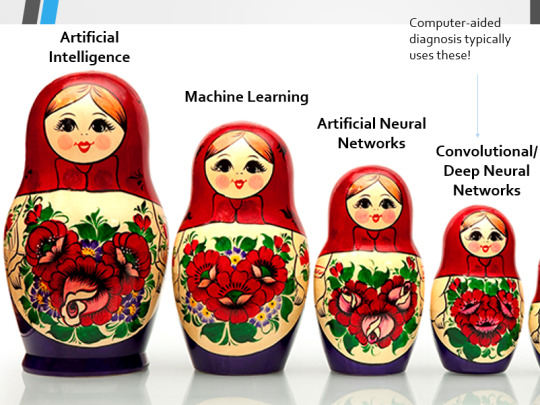
Let's dig a bit deeper! AI is a massive umbrella term that contains many smaller umbrella terms, nested together like Russian dolls. So, we can use this model to envision how these different fields fit inside one another.

AI is the term for anything to do with creating and managing machines that perform tasks which would otherwise require human intelligence. This is what differentiates AI from regular computer programming.
Machine Learning is the development of statistical algorithms which are trained on data –but which can then extrapolate this training and generalise it to previously unseen data, typically for analytical purposes. The thing I want you to pay attention to here is the date of this reference. It’s very easy to think of AI as being a ‘new’ thing, but it has been around since the Fifties, and has been talked about for much longer. The massive boom in popularity that we’re seeing today is built on the backs of decades upon decades of research.
Artificial Neural Networks are loosely inspired by the structure of the human brain, where inputs are fed through one or more layers of ‘nodes’ which modify the original data until a desired output is achieved. More on this later!
Deep neural networks have two or more layers of nodes, increasing the complexity of what they can derive from an initial input. Convolutional neural networks are often also Deep. To become ‘convolutional’, a neural network must have strong connections between close nodes, influencing how the data is passed back and forth within the algorithm. We’ll dig more into this later, but basically, this makes CNNs very adapt at telling precisely where edges of a pattern are – they're far better at pattern recognition than our feeble fleshy eyes!
This is massively useful in Computer Aided Diagnosis, as it means CNNs can quickly and accurately trace bone cortices in musculoskeletal imaging, note abnormalities in lung markings in chest radiography, and isolate very early neoplastic changes in soft tissue for mammography and MRI.
Before I go on, I will point out that Neural Networks are NOT the only model used in Computer-Aided Diagnosis – but they ARE the most common, so we'll focus on them!

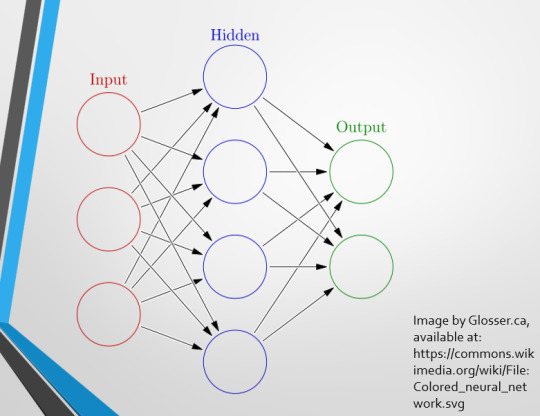
This diagram demonstrates the function of a simple Neural Network. An input is fed into one side. It is passed through a layer of ‘hidden’ modulating nodes, which in turn feed into the output. We describe the internal nodes in this algorithm as ‘hidden’ because we, outside of the algorithm, will only see the ‘input’ and the ‘output’ – which leads us onto a problem we’ll discuss later with regards to the transparency of AI in medicine.
But for now, let’s focus on how this basic model works, with regards to Computer Aided Diagnosis. We'll start with a game of...
Spot The Pathology.
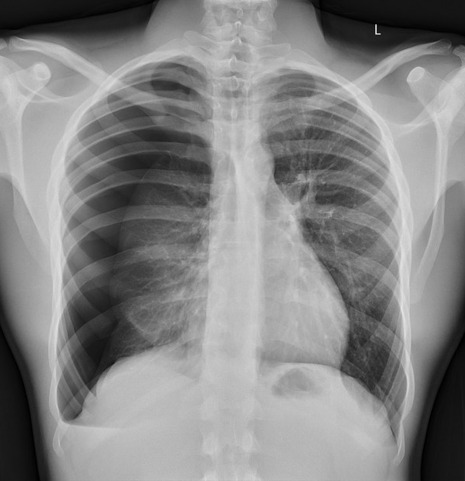
yeah, that's right. There's a WHACKING GREAT RIGHT-SIDED PNEUMOTHORAX (as outlined in red - images courtesy of radiopaedia, but edits mine)
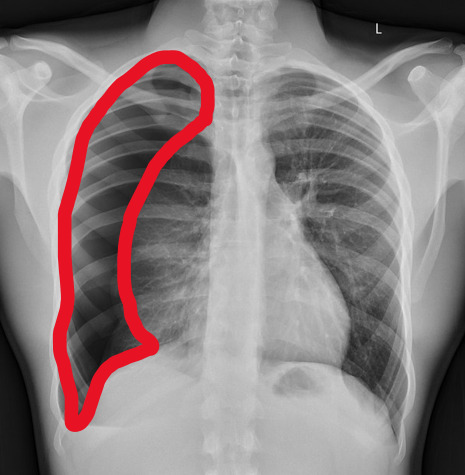
But my question to you is: how do we know that? What process are we going through to reach that conclusion?
Personally, I compared the lungs for symmetry, which led me to note a distinct line where the tissue in the right lung had collapsed on itself. I also noted the absence of normal lung markings beyond this line, where there should be tissue but there is instead air.
In simple terms.... the right lung is whiter in the midline, and black around the edges, with a clear distinction between these parts.
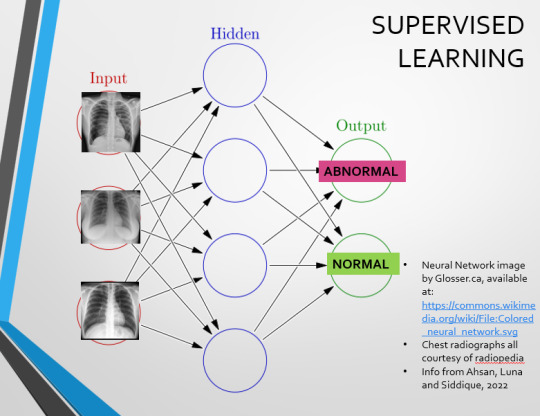
Let’s go back to our Neural Network. We’re at the training phase now.
So, we’re going to feed our algorithm! Homnomnom.
Let’s give it that image of a pneumothorax, alongside two normal chest radiographs (middle picture and bottom). The goal is to get the algorithm to accurately classify the chest radiographs we have inputted as either ‘normal’ or ‘abnormal’ depending on whether or not they demonstrate a pneumothorax.
There are two main ways we can teach this algorithm – supervised and unsupervised classification learning.
In supervised learning, we tell the neural network that the first picture is abnormal, and the second and third pictures are normal. Then we let it work out the difference, under our supervision, allowing us to steer it if it goes wrong.
Of course, if we only have three inputs, that isn’t enough for the algorithm to reach an accurate result.
You might be able to see – one of the normal chests has breasts, and another doesn't. If both ‘normal’ images had breasts, the algorithm could as easily determine that the lack of lung markings is what demonstrates a pneumothorax, as it could decide that actually, a pneumothorax is caused by not having breasts. Which, obviously, is untrue.
or is it?
....sadly I can personally confirm that having breasts does not prevent spontaneous pneumothorax, but that's another story lmao
This brings us to another big problem with AI in medicine –

If you are collecting your dataset from, say, a wealthy hospital in a suburban, majority white neighbourhood in America, then you will have those same demographics represented within that dataset. If we build a blind spot into the neural network, and it will discriminate based on that.
That’s an important thing to remember: the goal here is to create a generalisable tool for diagnosis. The algorithm will only ever be as generalisable as its dataset.
But there are plenty of huge free datasets online which have been specifically developed for training AI. What if we had hundreds of chest images, from a diverse population range, split between those which show pneumothoraxes, and those which don’t?
If we had a much larger dataset, the algorithm would be able to study the labelled ‘abnormal’ and ‘normal’ images, and come to far more accurate conclusions about what separates a pneumothorax from a normal chest in radiography. So, let’s pretend we’re the neural network, and pop in four characteristics that the algorithm might use to differentiate ‘normal’ from ‘abnormal’.
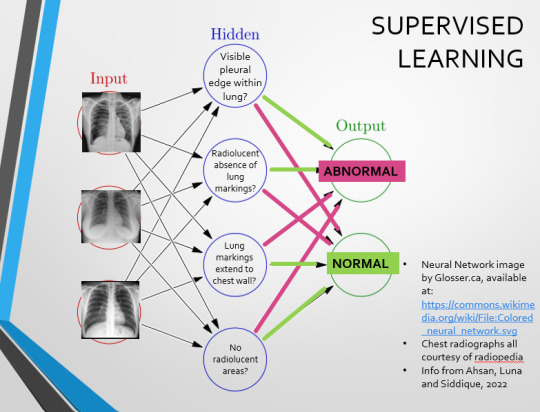
We can distinguish a pneumothorax by the appearance of a pleural edge where lung tissue has pulled away from the chest wall, and the radiolucent absence of peripheral lung markings around this area. So, let’s make those our first two nodes. Our last set of nodes are ‘do the lung markings extend to the chest wall?’ and ‘Are there no radiolucent areas?’
Now, red lines mean the answer is ‘no’ and green means the answer is ‘yes’. If the answer to the first two nodes is yes and the answer to the last two nodes is no, this is indicative of a pneumothorax – and vice versa.
Right. So, who can see the problem with this?
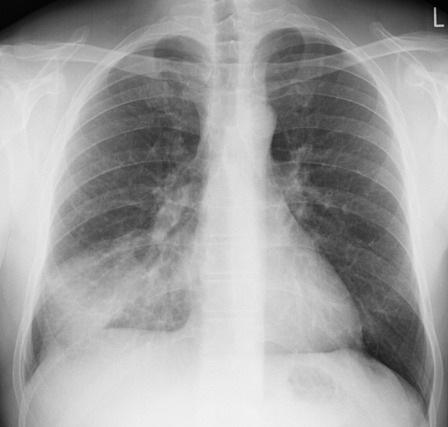
(image courtesy of radiopaedia)
This chest radiograph demonstrates alveolar patterns and air bronchograms within the right lung, indicative of a pneumonia. But if we fed it into our neural network...
The lung markings extend all the way to the chest wall. Therefore, this image might well be classified as ‘normal’ – a false negative.
Now we start to see why Neural Networks become deep and convolutional, and can get incredibly complex. In order to accurately differentiate a ‘normal’ from an ‘abnormal’ chest, you need a lot of nodes, and layers of nodes. This is also where unsupervised learning can come in.
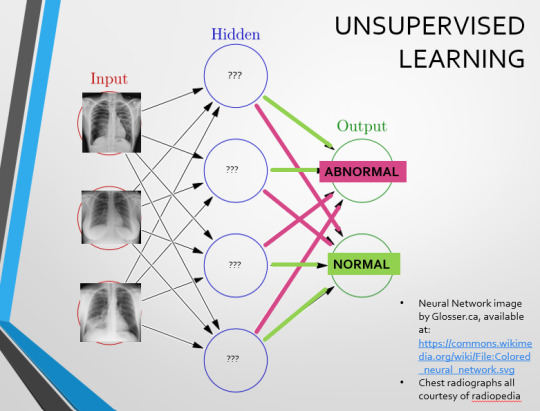
Originally, Supervised Learning was used on Analytical AI, and Unsupervised Learning was used on Generative AI, allowing for more creativity in picture generation, for instance. However, more and more, Unsupervised learning is being incorporated into Analytical areas like Computer-Aided Diagnosis!
Unsupervised Learning involves feeding a neural network a large databank and giving it no information about which of the input images are ‘normal’ or ‘abnormal’. This saves massively on money and time, as no one has to go through and label the images first. It is also surprisingly very effective. The algorithm is told only to sort and classify the images into distinct categories, grouping images together and coming up with its own parameters about what separates one image from another. This sort of learning allows an algorithm to teach itself to find very small deviations from its discovered definition of ‘normal’.
BUT this is not to say that CAD is without its issues.
Let's take a look at some of the ethical and practical considerations involved in implementing this technology within clinical practice!
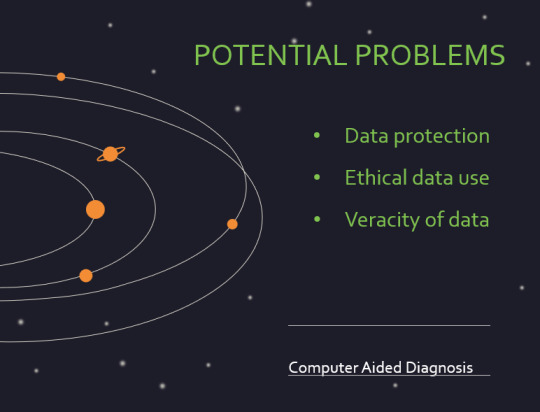

(Image from Agrawal et al., 2020)
Training Data does what it says on the tin – these are the initial images you feed your algorithm. What is key here is volume, variety - with especial attention paid to minimising bias – and veracity. The training data has to be ‘real’ – you cannot mislabel images or supply non-diagnostic images that obscure pathology, or your algorithm is useless.
Validation data evaluates the algorithm and improves on it. This involves tweaking the nodes within a neural network by altering the ‘weights’, or the intensity of the connection between various nodes. By altering these weights, a neural network can send an image that clearly fits our diagnostic criteria for a pneumothorax directly to the relevant output, whereas images that do not have these features must be put through another layer of nodes to rule out a different pathology.
Finally, testing data is the data that the finished algorithm will be tested on to prove its sensitivity and specificity, before any potential clinical use.
However, if algorithms require this much data to train, this introduces a lot of ethical questions.
Where does this data come from?
Is it ‘grey data’ (data of untraceable origin)? Is this good (protects anonymity) or bad (could have been acquired unethically)?
Could generative AI provide a workaround, in the form of producing synthetic radiographs? Or is it risky to train CAD algorithms on simulated data when the algorithms will then be used on real people?
If we are solely using CAD to make diagnoses, who holds legal responsibility for a misdiagnosis that costs lives? Is it the company that created the algorithm or the hospital employing it?
And finally – is it worth sinking so much time, money, and literal energy into AI – especially given concerns about the environment – when public opinion on AI in healthcare is mixed at best? This is a serious topic – we’re talking diagnoses making the difference between life and death. Do you trust a machine more than you trust a doctor? According to Rojahn et al., 2023, there is a strong public dislike of computer-aided diagnosis.
So, it's fair to ask...
why are we wasting so much time and money on something that our service users don't actually want?
Then we get to the other biggie.
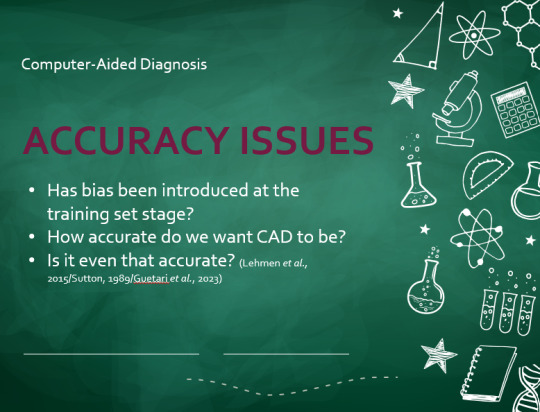
There are also a variety of concerns to do with the sensitivity and specificity of Computer-Aided Diagnosis.
We’ve talked a little already about bias, and how training sets can inadvertently ‘poison’ the algorithm, so to speak, introducing dangerous elements that mimic biases and problems in society.
But do we even want completely accurate computer-aided diagnosis?
The name is computer-aided diagnosis, not computer-led diagnosis. As noted by Rajahn et al, the general public STRONGLY prefer diagnosis to be made by human professionals, and their desires should arguably be taken into account – as well as the fact that CAD algorithms tend to be incredibly expensive and highly specialised. For instance, you cannot put MRI images depicting CNS lesions through a chest reporting algorithm and expect coherent results – whereas a radiologist can be trained to diagnose across two or more specialties.
For this reason, there is an argument that rather than focusing on sensitivity and specificity, we should just focus on producing highly sensitive algorithms that will pick up on any abnormality, and output some false positives, but will produce NO false negatives.
(Sensitivity = a test's ability to identify sick people with a disease)
(Specificity = a test's ability to identify that healthy people do not have this disease)
This means we are working towards developing algorithms that OVERESTIMATE rather than UNDERESTIMATE disease prevalence. This makes CAD a useful tool for triage rather than providing its own diagnoses – if a CAD algorithm weighted towards high sensitivity and low specificity does not pick up on any abnormalities, it’s highly unlikely that there are any.
Finally, we have to question whether CAD is even all that accurate to begin with. 10 years ago, according to Lehmen et al., CAD in mammography demonstrated negligible improvements to accuracy. In 1989, Sutton noted that accuracy was under 60%. Nowadays, however, AI has been proven to exceed the abilities of radiologists when detecting cancers (that’s from Guetari et al., 2023). This suggests that there is a common upwards trajectory, and AI might become a suitable alternative to traditional radiology one day. But, due to the many potential problems with this field, that day is unlikely to be soon...
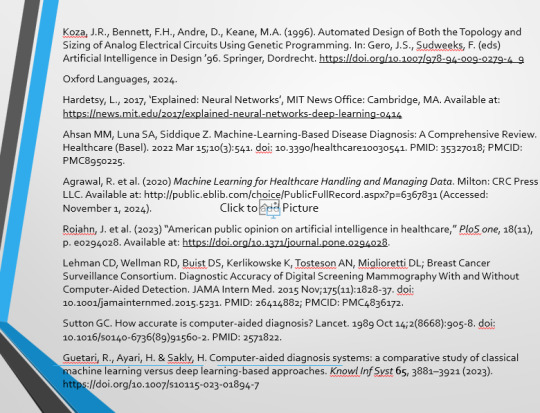
That's all, folks! Have some references~
#medblr#artificial intelligence#radiography#radiology#diagnosis#medicine#studyblr#radioactiveradley#radley irradiates people#long post
16 notes
·
View notes
Text
Marrying Maru

Not too long ago, I married Maru, the nerdy Stardew Valley girl who makes robots. I then proceeded to get her final 14 heart relationship event, after which I lost interest in Stardew Valley.
This has happened to me before. 20 years ago, when I was into Harvest Moon 64, I chased Karen incessantly, giving her all the random gifts that I could forage in the forests and spending my evening hours in the bar with her at the expense of my farm. Upon winning her heart, I stopped playing the game.
Back then, I liked to joke that this represented some sort of cad-like behavior in myself - that the chase was all that mattered to me. But as an actual married fella these days, I know this isn't the case. Rather, I've realized that I enjoy Stardew Valley (and by extension the Harvest Moon games that inspired it) not so much as the cute farming game it mostly is, but as a relationship game. And when I say relationships, I don't just mean the ones that occur with Maru and the other dating options. I mean the whole idea of moving into a small country town, making friends with the villagers, and becoming a fixture of the community. All of that stuff vibes with me way more than the act of growing turnips, milking cows, or building silos so I can grow turnips more efficiently and milk even more cows.

To explain this in more detail, many serious Stardew players post pictures on Reddit showing their pimped-out farms that are entirely automated with turnips that grow themselves. My farm, in contrast, is a bit of a mess - it's semi-automated, but I've got trees planted far too close together, my crop arrangements aren't aligned, and the western sector of my farm continues to remain a shitshow because I just can't be arsed to clear away those rocks and stray weeds. All this aside, my farm is good enough, and I don't feel like continously improving it because it's not the meat of the game to me.
The meat, rather, is those aforementioned connections made with villagers, all of whom are kind enough to show me their current affection level with a handy little colored dot representing a heart in the righthand corner of their text boxes. Over the process of wooing Maru, I managed to max out the hearts of her parents, her brother Sebastian, all of the villagers who live in proximity of her family's mountain home (hello Linus, you swell hobo), and almost all of the other bachelors and bachelorettes, who proceeded to hit on me shamelessly after Maru and I went steady, because that's just how this game works. (Everyone lusts for the farmer.)

And so, with most of the townsfolk that I cared about either in love with me or enamored with me as a close friend, my interest in the game dwindled. Oh, there's still stuff to do in Stardew Valley, like finishing the community center or getting a 100% score, and for a while I considered both of those challenges. But the community center is infamous for the busywork required to complete it, and it forces me to pay attention to my seasonal crop output, fishing catches, and recipes in a way that requires min/maxing or guide-consulting, which is something I feel reluctant to engage with in a game about retiring from the stress and monotony of city life for the simplicity of the countryside. Once the center is complete, as well, nobody in town actually uses it, which is perhaps the most lamented fact on the Stardew Reddit. And as for the 100% score, I'm just not built to achievement-hunt and do every little thing for the allure of getting the 'perfect' game these days.
Stardew Valley also carries over an unfortunate habit from most of the Harvest Moons. Once you marry someone, their personality slowly diminishes as their story reaches a conclusion. This is fairly typical for video games, which have never managed to represent marriage as something that's a beginning rather than an end. Yes, you can have kids with your spouse, but those kids only grow to toddler age and end up waddling around your farmhouse for all eternity, only slightly more interesting than furniture. And I don't really want to have kids with Maru anyway - I just want to manifest the outcome of her 14 heart event, which was a cute astronomy date where we reminisced about her robot MARILDA, who gained sentience and decided to fly through the cosmos. At the end of it, we watched a falling star, and I told her I'd made a wish to grow old with her, and she said she had the same wish. But this wish shall never play out.

I say all of this with some facetiousness. Obviously, Stardew Valley is a very good project made by one very hardworking guy, ConcernedApe, who put years of his heart and soul into it. Marriage was just one piece of the puzzle for him to implement into a game that needed to juggle enough elements to appeal to fans of Harvest Moon, Rune Factory, and heck, even Legend of the River King. But as someone who loves the relationship side of these life sims more than anything else, I simply daydream of more. I chose Maru because she's the closest Stardew character who resembles my real-life biracial wife, and as one of only two POC characters in the game, I demand to know more about her existence as a half-Black resident of a mostly white town. On that note, what are her thoughts on being neurodivergent and having astronomy and robots as her special interests? (Yes, her dad Demetrius is most certainly on the spectrum, and Maru probably is too.) What about her relationship with her half-brother Sebastian, who resents her as the child who receives more fatherly affection?
All of these character traits gleamed at me as I got to know Maru, and alas, they remain mere gleams that are not further developed. Once again, I suppose it's a bit much to ask for Stardew Valley to delve into topics like race relations, since this is after all a very white game due to what I assume are the life experiences of ConcernedApe. (Maru herself is a 'Black girls do STEM' sterotype, admittedly.) But the fact that Stardew even bothers to bring up these topics at all makes me see the lovely potential that exists beyond the stars, and I wish that potential could be cultivated.
If I were to turn all of these hopes into reality, I suppose my ideal Stardew Valley would be one that still looks the same, but doesn't place end goals on farm success. (Indeed, I think you could replace farming with a wide number of professions - I'd personally love to play as a bookstore owner or libarian in a small town.) Rather, the finale would depend on raising those little heart levels in everyone's text boxes, creating community to the fullest, finding friendships that don't always exist in real life, and loving someone with all of their warts and drama - through spats with their family, realizations of their deeper self, and wishes that may never fully develop. Until we finally grow old and die together. The closest Harvest Moon ever got to managing this was with A Wonderful Life, but to quote an old meme, I think we can go deeper.
So that, in a nutshell, is why I married Maru and stopped playing Stardew Valley. To me, my game more or less reached its natural finale when the two of us smooched under the stars and thought about a future where we grew old and crusty together. That's the future that I long for with my real-life waifu...and I guess I kinda want it with my in-game waifu as well.

9 notes
·
View notes
Text
PC Components and You: A Brief Primer
(a.k.a "Just What Is Adam Talking About In Those Random Posts of His?")
"Building a computer" is one of those things that sounds like an incredibly complicated technical feat, but is in reality much less difficult than it sounds. Most of the stress, in my experience, happens when you're trying to pick out parts. Second place being when the build is done and you know you've forgotten to plug something in, but can't for the life of you figure out what. Once you've got a handle on what the different parts are and do, it's mostly a process of inserting tab A into slot B, and when it's over, you'll have a machine you know inside and out and customize to your liking.
(all images from PC Part Picker unless stated otherwise)
1. The CPU

(screenshot from GamersNexus)
The Central Processing Unit, or CPU, is probably the first part you'll pick out in a build, and the second most important for gaming, image and video editing, and various CAD-related stuff. Your choice CPU will determine your options for a motherboard and RAM. You two mainstream choices for CPUs will be Intel and AMD.
Aside from a general rule of "newer tends to be better", a CPU's performance is usually determined by core count, thread count, and clock speed.
Core count, shockingly enough, refers to the number of individual processing cores. Any desktop CPU you buy today is a multicore processor, and in 2025, nothing below 6 is worth looking at. Thread count is the number of instruction sets a core can work through at the same time (put very simply; it's more like the threads quickly taking turns). Strictly speaking, more cores is preferable to more threads, but you want as many of each as you can get, especially in CPU-intensive workloads.
Clock speed is the speed at which a core operates, the faster the better. Many users manually raise the power draw of their CPUs to increase the clock speed, hence the term "overclocking".
2. The Motherboard

The thing that all the other things plug into. The Motherboard is mounted inside your case and lets all your components coordinate with each other. The nervous system to the CPU's brain. A motherboard's capabilities are determined by the CPU socket, and the chipset. They are developed by the same companies as CPUs, but manufactured and sold by a number of third-party companies.
The CPU socket is pretty self-explanatory: It accommodates compatible CPUs and only compatible CPUs; an Intel chip will not fit an AMD motherboard, or vice-versa, and trying will destroy multiple expensive pieces of hardware. A given socket may be used for multiple product generations, and older boards can usually use newer chips that fit, after a BIOS update; a board made for, for example, a Ryzen-1000 series processor in the Socket AM4, could work with anything up to a 5000 series, assuming the BIOS supports it.
A chipset determines what and how many devices a board can support, although a given board might not use all of a chipset's features.
Many (but by no means all) motherboards have built in connectivity for things like ethernet, wifi, or audio and video output (for integrated graphics, more on that below), via the rear I/O ports.
A motherboard will have a certain number of SATA ports, which connect hard drives, full-sized SSDs, and optical drives (assuming your case supports one). Headers to connect your case's USB ports, audio jacks, and fans will usually be located along the edges of the board.
PCIe slots allow for expansion cards that increase your PC's functionality with features that aren't included on the main board, like a graphics card or a network adapter. Most boards include at least one full PCIe x16 slot, and one lower-bandwidth PCIe x1. The current standard is PCIe 5.0.
BIOS is the motherboard's onboard firmware, although most modern systems use the technically different but functionally identical UEFI (which, as I recently learned, is a requirement for Windows 11). Some boards allow for either to be used, depending on what your operating system supports.
3. Cooling
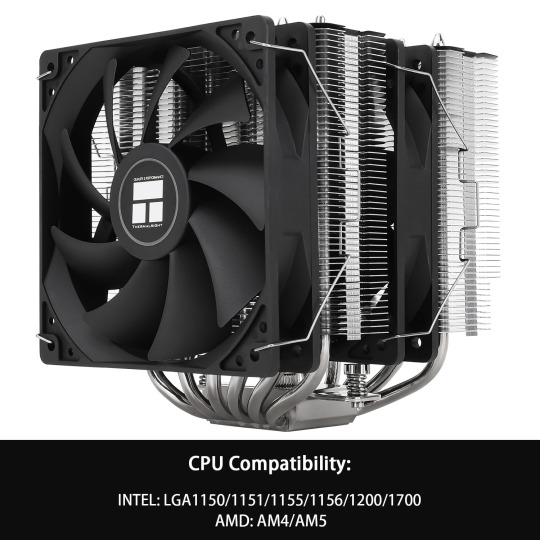
(image from Amazon)
CPUs generate a lot of heat, enough to cook themselves. You need a cooling solution; in fact, most motherboards won't even let the system power on unless the dedicated cooler fan power header is plugged. Coolers are placed directly against the CPU with a conductive thermal compound and attached to the board. In a common air-cooler, the heat is radiated through the fins and expelled via fan; liquid cooling options exist for the enthusiast.
Many lower-power CPUs still come with coolers included. Higher-end chips need coolers purchased separately. The companies' rationale is that the better chips can be overclocked, which makes them run hotter, necessitating heftier cooling than it was cost-effective to provide.
4. RAM
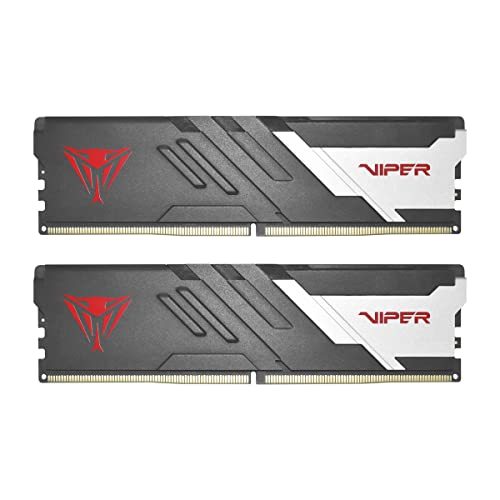
Random Access Memory, RAM, is the high-speed memory that passes information between your storage, CPU, and peripherals. You need it for your computer to work at all, and you need more of it clocked higher for your computer to work well. You can get by with 16 gigabytes, but these days I'd recommend 32.
RAM slots on your motherboard are specialized, and vary in shape depending on which generation you're using. The current standard is DDR5, and generations are not intercompatible. A DDR4 stick (or DIMM) will not work in a DDR5 slot, or vice-versa. The sticks are notched off-center and can only be inserted one way.
Most consumer boards have two or four RAM slots, and run in dual-channel, meaning that they work best with identical DIMMs in the first and third or second and fourth slots (the reasons for this are complicated and I don't fully understand them, but that's how it works). It's my understanding that it's better, in a four-slot board, to have two high-capacity sticks than it is to have four-lower capacity ones for the same total RAM, as performance suffers when drawing from four sticks at once (also complicated, also don't fully understand it).
Besides capacity, your RAM's performance depends on its clock speed and its CAS latency. The sticks pictured above, for example, are DDR5-6400 CL32, meaning it runs at 6400 megahertz with a base latency of (more or less) 32 nano seconds. It's mechanically more complicated than that, and a faster frequency will negate much of the negative impact of a higher latency. In general you want higher clock and lower latency, with preference given to higher clock speed.
5. Storage


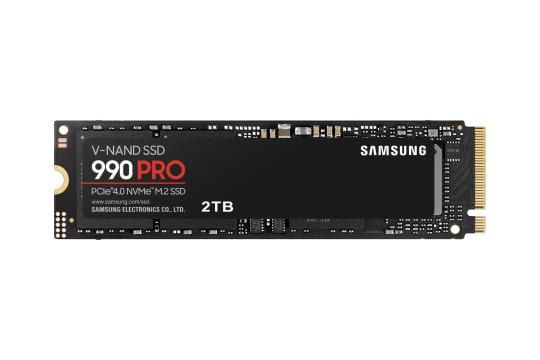
Long-term memory. Your storage drives will come in two broad categories: Solid State Drives (SSD) and older mechanical Hard Disk Drives (HDD).
SSDs are pure flash storage and have no moving parts, and are much faster than HDDs, which read their data off of spinning platters. This allows them to be smaller and quieter.
Desktop HDDs have 3.5''platters (which is where the 3.5/2.5 form factor distinction comes from). They're one of the noisiest components in a PC, but are relatively cheap nowadays; the WD Blue drive pictured above is roughly half the price of its SSD counterpart. Their best use case now is for the mass storage of low-impact files like music or videos. It needs both a SATA cable to connect to the motherboard, and a power cable from the PSU.
Modern SSDs are additionally split off into two types, one of which is further subdivided by interface. A regular old 2.5'' drive is connected by SATA cable and needs a power cable to run. This type is generally your cheapest solid state option, and I'd consider it the minimum for your OS and programs.
The newest option is an M.2 drive, distinguished by plugging directing into your motherboard (or an expansion card), and needing no separate power cable, allowing for a much cleaner setup. They vary in length and width, ranging from a bit larger than your big toenail to a little bigger than a stick of gum, and are very thin without a heatsink attached. Older M.2 slots are on the SATA standard, and typically won't run any faster than the 2.5'' drive pictured above. An NVMe drive, on the other hand, is both faster internally and uses a specialized PCIe slot. Their ports may or may not be intercompatible, depending on your motherboard. More demanding programs like games at high resolutions and settings benefit tremendously from running off an NVMe drive.
6. Graphics
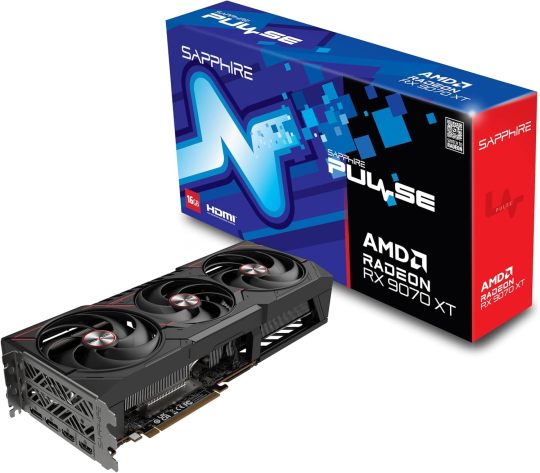
At it's most basic, your Graphics Processing Unit (GPU) is just there to put all the stuff your computer is doing onto a screen for you to see. They range from extremely basic display adapters useful for nothing more demanding than youtube videos, up to absolute beasts capable of rendering every strand of hair in lifelike fidelity at the highest of resolutions. They come in two varieties: Integrated (iGPU) and discrete or dedicated (dGPU). They're developed primarily by Nvidia and AMD, with Intel recently reentering the entry-level space, and primarily manufactured and sold by third-party companies.
Integrated graphics are built directly into the CPU and output through the motherboard. They're primarily display adapters, use your onboard RAM, and can usually only handle relatively lightweight gaming and productivity workloads. The simplest and cheapest option if you just need to see what you're doing and nothing more, but not every CPU includes one.
Dedicated graphics cards plug in via your motherboard's PCIe (usually in the top fullsized x16 slot), have their own RAM, and typically require supplemental power over a special cable from the power supply. A high-powered card is essential for heavy gaming, editing, and CAD rigs.
Like CPUs, GPUs use multi-core setups. With GPUs, however, the core count is much higher, because the workload for each is much simpler. As always, newer and more will usually beat older and fewer.
Video RAM (VRAM) is where the GPU arguably sinks or swims. Textures and effects are big and resource-intensive, and you need VRAM to load it up and push it through to the display. Even a good GPU will be let down by insufficient VRAM. 16gb is the minimum for a modern workload; 8gb can can and should be ignored for anything more than esports or pre-ninth gen titles.
These are the problem children of the PC building world; they're already the most expensive single piece in most builds, and they're by far the most subject to both manufacturer whim and market volatility. This is because their high number of simple processing cores make them great at the number crunching you need for things like cryptocurrency mining and, more recently, AI development. AI devs in particular have become the primary customers for most of this hardware, leaving the gaming and productivity crowds to fight for whatever scraps the manufacturers deign to pass along to the consumer market. The 9070xt pictured above, a card I would describe as "the high end of mid", has an MSRP of $600, and is currently selling on Amazon for $780. I don't trust the used market myself (for about 450 reasons), but it's an increasingly attractive prospect for a lot of people.
7. Power Supply
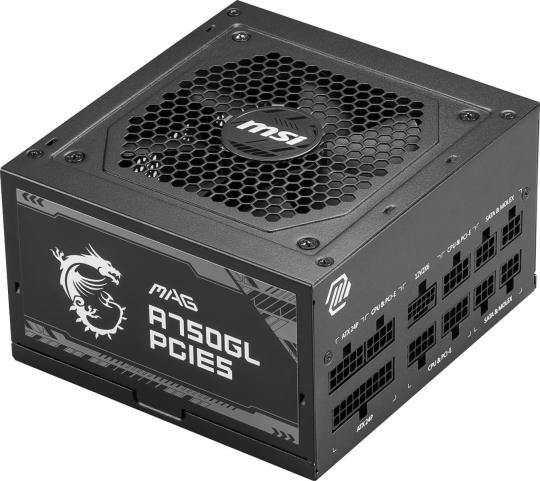

You probably don't need me to explain what this does. One bit goes into the wall, one bit goes in everything else. The power supply (PSU) supplies power. It's a critical but often overlooked part of a computer; half the reason I tell people to stay away from pre-built computers is the uncertain provenance of the components, and nowhere do things get less certain than with weird cheap OEM power supplies from companies nobody's ever heard from. They make it next to impossible to add anything in because their wattage is so low, and the first suspect in a system failure. You want a reputable brand. A good PSU can take you through multiple builds if you treat it well; a bad PSU can destroy your entire computer, and might not stop at that. It isn't that much more expensive to get something reasonable, and it's money you won't miss.
A power supply needs to be able to pull enough wattage from the wall to feed your whole system. A graphics card is usually the biggest power hog, but overclocking will also raise demand. All parts have a wattage requirement; take note of it and buy accordingly. (the second reason to avoid cheap power supplies/prebuilts: the wattage is always low, and even the ones that work can't support new parts)
You'll notice a rating badge on most boxes for 80+ certification. This means that the PSU is 80% power-efficient at various levels of load. The tiers run from basic 80+ all the way up to 80+Ruby. Basic 80+ is what I'd call the bottom of the barrel. 80+Bronze is the safestpoint for price and quality, Gold being what I'd personally feel safest at.
Every PSU has a large-plug ATX cable for the motherboard power(you'll know it when you see it, trust me), a smaller plug for CPU power(probably glance at the manual for that one), and at least one connector for SATA devices (usually three plugs per cable in my experience). Any decent PSU will have at least two for SATA, additional molex connectors, and one or two PCIe power cables to power the graphics card. You may need an adapter for that last one, which will usually (but not always) come with the card.
Power supplies are sold as either modular, semi-modular, or non-modular. A modular PSU's cables are all detachable. You plug in what you need and leave the rest in the box. Semi-modular is similar, except for the board and CPU cables, which are attached. Non-modular, as the name suggests, has all the cables attached, and is the least attractive option in terms of aesthetics.
DO NOT USE THE CABLES FROM ONE POWER SUPPLY IN ANOTHER. THEY ARE NOT THE SAME. THIS CAN DESTROY YOUR COMPUTER. ALWAYS GET REPLACEMENT CABLES FOR YOUR SPECIFIC MODEL FROM THE MANUFACTURER.
As with most components, power supplies vary a bit in size, and the size you can use is dictated by the last item on today's walkthrough...
8. Case
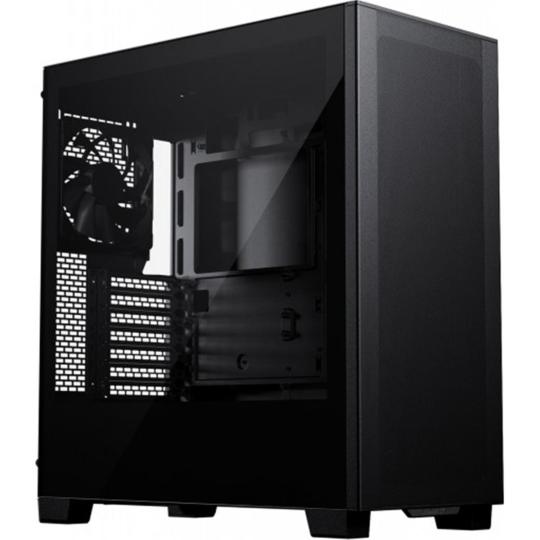
If Star Wars Episode I: The Phantom Menace taught us one thing, it was that George Lucas needs competent people on scripts and editing who are willing to tell him when something isn't working. If it taught us two things, the second one is that machines don't like to be naked.
The case does four things for your build: It provides the structure upon which all other components hang; it keeps out dust, debris, and pests; it ideally provides and directs the airflow to keep everything from getting too hot, and it lets you move everything in one go.
Cases generally come in one of four common form factors: Mini-ITX (both a case and board standard) is the smallest and most portable; Micro-ATX (ditto) is larger with more room for expansions. Mid-Tower cases, the most common, have a respectable amount of space and can fit most components. Full Towers are the biggest you'll find outside of server or custom markets, can fit the most and the biggest components, and are all but certain to make people ask "what the hell do you have in there!?".
Cable management between your power supply, mother board, and other components is usually done via the small space between the motherboard mount and the detachable right-hand side panel on most cases. Proper cable management is good for airflow and looks better if you have a side panel window.
You'll want a case that's big enough to accommodate the rest of your build, easy to work in if you need to adjust something, and with enough ventilation and case fans (preferably filtered) to keep it clean and cool.
Beyond those requirements, everything else is up to you. If you don't particularly care about front audio or USB, there are cases that omit it. If you do, you'll have plenty of options there as well. Glass or plastic side panel to show of your build? They've got 'em. Want to cheat on cable management and shove all your cables into a pile out of sight? Your PSU basement literally has you covered. There are cases that prioritize hard drive space, cases that are built for watercooling loops, hell there are still options for things like internal optical disk drives if you want one. Black is the standard for color, but you can find others.
Further Reading
You'll note I didn't actually include a how-to in this little guide. While it's not as complicated as it sounds, building a PC is involved, and I find it helps to watch it being done (it sure helped me). Paul's Hardware has some good step-by-step instructional videos.
For what I think are good product reviews and coverage of industry news, I prefer GamersNexus and Hardware Unboxed.
For putting together your own build, checking power consumption, and doublechecking compatibility, I can't recommend PCPartPicker highly enough.
For build advice, consider r/buildapc.
5 notes
·
View notes
Text

Canada selects Boeing's P-8A Poseidon as its new multi-mission aircraft
The partnership with Canadian industry will provide long-term economic prosperity to Canada 🇨🇦
Fernando Valduga By Fernando Valduga 11/30/2023 - 18:52 in Military
With the P-8, Canada guarantees the interchangeability of allies NORAD and FIVE EYES.
The government of Canada signed a letter of offer and acceptance of foreign military sales for up to 16 Boeing P-8A Poseidon aircraft, as part of the Canadian Multimission Aircraft Project (CMMA).
Canada joins eight defense partners, including all allies of FIVE EYES, the intelligence alliance that also includes the United States, the United Kingdom, Australia and New Zealand, and becomes the fifth NATO nation to have selected the P-8 as its multi-mission aircraft. The first delivery is scheduled for 2026.

“The P-8 will strengthen Canada's defense capability and readiness, and we look forward to delivering that capability to the Royal Canadian Air Force,” said Heidi Grant, president of Business Development at Boeing Defense, Space & Security. “Together with our Canadian partners, we will deliver a strong package of industrial and technological benefits that will ensure continued prosperity for Canada's aerospace and defense industry.”
The P-8 is the only proven in-service and production solution that meets all CMMA requirements, including range, speed, strength and payload capacity. This decision will benefit hundreds of Canadian companies and bring decades of prosperity to Canada through the support of the platform provided by our Canadian industrial partners.
The acquisition of P-8 will generate benefits of almost 3,000 jobs and $358 million annually in economic output for Canada, according to a 2023 independent study by Ottawa-based Doyletech Corporation.
“This is a very important day for the Royal Canadian Air Force and Boeing,” said Charles 'Duff Sullivan, managing director of Boeing Canada. "The P-8 offers unparalleled capabilities and is the most affordable solution for acquisition and life cycle maintenance costs. There is no doubt that the P-8 will protect Canada's oceans and borders for future generations."

The partnership with Canadian industry will provide long-term economic prosperity to Canada.
The Poseidon Team is the cornerstone of Boeing's Canadian P-8 industrial partnership, composed of CAE, GE Aviation Canada, IMP Aerospace & Defense, KF Aerospace, Honeywell Aerospace Canada, Raytheon Canada and StandardAero. The team is based on the 81 existing Canadian suppliers for the P-8 platform and more than 550 Boeing suppliers in all provinces, contributing to the company's annual economic benefit of approximately CAD$ 4 billion for Canada, supporting more than 14,000 Canadian jobs.
With more than 160 aircraft delivered or in service and 560,000 collective flight hours, the P-8 has proven capabilities for anti-submarine warfare, anti-surface warfare, intelligence, surveillance, reconnaissance and humanitarian assistance/disaster relief response.
Tags: Military AviationBoeingP-8A PoseidonRCAF - Royal Canadian Air Force/Canada Air Force
Sharing
tweet
Fernando Valduga
Fernando Valduga
Aviation photographer and pilot since 1992, has participated in several events and air operations, such as Cruzex, AirVenture, Dayton Airshow and FIDAE. He has work published in specialized aviation magazines in Brazil and abroad. Uses Canon equipment during his photographic work in the world of aviation.
Related news
BRAZILIAN AIR FORCE
UFSM receives A-1 jet donated by FAB
30/11/2023 - 18:01
One of the first of the 32 F-16s for Romania being delivered by the Norwegian Minister of Defense on November 28. (Photo: Norwegian Armed Forces)
MILITARY
Romania receives first F-16s that were from the Norwegian Air Force
11/30/2023 - 5:00 PM
HELICOPTERS
Norway says goodbye to its last Westland Sea King helicopter
11/30/2023 - 4:00 PM
MILITARY
HENSOLDT supports BAE Systems in the development of the Striker II fighter pilot helmet
11/30/2023 - 2:00 PM
MILITARY
First Belgian F-35A Lightning II starts painting process
11/30/2023 - 1:00 PM
AIR CARGO
Atlas Air places new order for Boeing 777F freighters
11/30/2023 - 10:30
19 notes
·
View notes
Text
Optimizing Group Projects with SolidWorks PDM: The Ultimate Collaboration Tool

Group assignments can be challenging, especially in engineering, where collaboration and accuracy are crucial. SolidWorks Product Data Management (PDM) is a powerful tool that streamlines collaborative efforts, making group assignments more efficient and manageable. In this blog, we'll explore how SolidWorks PDM facilitates collaboration, enhances productivity, and ensures project success. We'll also highlight the benefits of seeking the Best Solidworks Assignment Help Online and solidworks Assignment Help to maximize your academic performance.
What is SolidWorks PDM?
SolidWorks PDM is a data management solution that centralizes the storage, organization, and control of project data. It allows multiple users to work on the same project simultaneously while ensuring that everyone has access to the latest information. This system is particularly beneficial for group assignments, where collaboration and version control are essential.
Key Features of SolidWorks PDM
Centralized Data Storage
SolidWorks PDM provides a secure, centralized repository for all project files. This ensures that team members can easily access and share data, reducing the risk of lost or misplaced files.
Version Control
With SolidWorks PDM, every modification is tracked, and previous versions are saved. This feature allows team members to revert to earlier versions if needed and ensures that everyone is working with the most up-to-date information.
Workflow Automation
The workflow automation feature streamlines the approval process. Tasks are automatically assigned, and notifications are sent to the relevant team members, ensuring that projects move forward without unnecessary delays.
Access Control
SolidWorks PDM allows administrators to set permissions for different users, ensuring that only authorized personnel can access sensitive information. This feature helps maintain data security and integrity.
Integration with CAD Software
SolidWorks PDM seamlessly integrates with SolidWorks CAD software, providing a cohesive environment for design and data management. This integration enhances productivity and reduces the likelihood of errors.
Benefits of Using SolidWorks PDM for Group Assignments
1. Enhanced Collaboration
SolidWorks PDM facilitates real-time collaboration among team members. By centralizing data storage and providing version control, it ensures that everyone is working on the same page. Team members can easily share updates and feedback, leading to more efficient project completion.
2. Improved Productivity
The workflow automation feature of SolidWorks PDM streamlines the approval process, reducing bottlenecks and ensuring that projects stay on track. By automating routine tasks, team members can focus on more critical aspects of the project, enhancing overall productivity.
3. Reduced Errors
Version control and access control features of SolidWorks PDM significantly reduce the likelihood of errors. Team members can always access the latest version of a file, and unauthorized changes are prevented. This ensures that the final output is accurate and meets the required standards.
4. Time Savings
With SolidWorks PDM, team members can quickly locate and access the necessary files, reducing the time spent searching for information. Workflow automation further saves time by eliminating manual approval processes. These time savings translate into more efficient project completion and better use of resources.
5. Better Project Management
SolidWorks PDM provides tools for tracking project progress and managing tasks. Team leaders can monitor the status of assignments, identify potential issues, and allocate resources effectively. This leads to better project management and successful completion of group assignments.
Seeking the Best Solidworks Assignment Help Online
While SolidWorks PDM offers numerous benefits for collaborative engineering projects, seeking professional assistance can further enhance your academic performance. The Best Solidworks Assignment Help Online provides expert guidance and support for your group assignments. Here are some reasons to consider seeking solidworks Assignment Help:
Expert Guidance
Professional assignment help services employ experts with extensive knowledge and experience in SolidWorks and PDM. They can provide valuable insights and guidance, helping you understand complex concepts and complete your assignments effectively.
Customized Solutions
Assignment help services offer customized solutions tailored to your specific requirements. Whether you need assistance with a particular aspect of the project or comprehensive support, they can provide the help you need.
Time Management
Balancing multiple assignments and responsibilities can be challenging. Seeking solidworks Assignment Help allows you to manage your time more effectively, ensuring that you can focus on other important tasks without compromising the quality of your work.
Quality Assurance
Professional assignment help services ensure that your assignments are of the highest quality. They provide thorough reviews and edits, ensuring that your final output meets academic standards and is free of errors.
Plagiarism-Free Work
Reputable assignment help services guarantee original, plagiarism-free work. This ensures that your assignments are unique and adhere to academic integrity guidelines.
Conclusion
Collaborative engineering projects can be complex and challenging, but SolidWorks PDM provides the tools necessary to streamline group assignments and enhance productivity. By centralizing data storage, providing version control, automating workflows, and ensuring data security, SolidWorks PDM facilitates efficient collaboration and successful project completion.
In addition to utilizing SolidWorks PDM, seeking the Best Solidworks Assignment Help Online can further enhance your academic performance. Expert guidance, customized solutions, and quality assurance ensure that your assignments meet the highest standards. By combining the benefits of SolidWorks PDM with professional assignment help, you can achieve success in your engineering studies and group projects.
For those looking to maximize their efficiency and productivity in group assignments, integrating SolidWorks PDM and leveraging solidworks Assignment Help is the way to go. This combination provides a comprehensive approach to collaborative engineering, ensuring that you and your team can achieve your academic and project goals with ease.
reference:
#solidworks#assignmenthelp#solidworks assignment help#solidworksassignmenthelp#studentassistance#education#school#academicsuccess
3 notes
·
View notes
Text
3d product renderings and mockups

It seems like you're looking for information or assistance with 3D product renderings and mockups. Creating 3D product renderings and mockups is a crucial step in the design and marketing process for various industries. Here's some information to help you get started:
1. Software for 3D Rendering:
Blender: A powerful and free open-source 3D creation suite.
Autodesk Maya: Widely used in the film and video game industry.
Cinema 4D: Known for its intuitive interface and powerful capabilities.
KeyShot: A standalone 3D rendering and animation application.
2. Creating 3D Models:
CAD Software (Computer-Aided Design): Use software like AutoCAD, SolidWorks, or Rhino to create accurate 3D models.
Sculpting Software: Tools like ZBrush or Blender's sculpting features are great for organic shapes.
3. Texturing and Materials:
Apply realistic textures and materials to your 3D model using UV mapping techniques.
Software like Substance Painter or Quixel Mixer can help create detailed and realistic materials.
4. Lighting:
Proper lighting is crucial for realistic renders. Experiment with different light setups to achieve the desired look.
Consider using High Dynamic Range Imaging (HDRI) for realistic environmental lighting.
5. Rendering:
Choose the appropriate rendering engine for your needs (Cycles in Blender, Arnold, V-Ray, etc.).
Adjust rendering settings such as resolution, quality, and output format.
6. Mockup Tools:
Adobe Dimension: Allows you to create realistic 3D mockups and product visualizations.
Placeit: An online platform that lets you create mockups with your designs on various products.
Mockup World: Offers a variety of free and premium mockups for different products.
7. Tutorials and Learning Resources:
Online platforms like Udemy, Coursera, and YouTube offer tutorials on 3D modeling, rendering, and mockup creation.
Join forums and communities like Blender Artists or Polycount for support and feedback.
8. Considerations for Product Mockups:
Understand the target audience and purpose of the mockup.
Pay attention to lighting, shadows, and reflections to make the mockup realistic.
Test the mockup on different backgrounds to ensure versatility.
9. Outsourcing:
If creating 3D models and renders is outside your expertise, consider outsourcing to professional 3D artists or agencies.
Remember to practice and experiment with different techniques to refine your skills. The field of 3D rendering is vast, and continuous learning is key to staying updated with the latest trends and technologies.
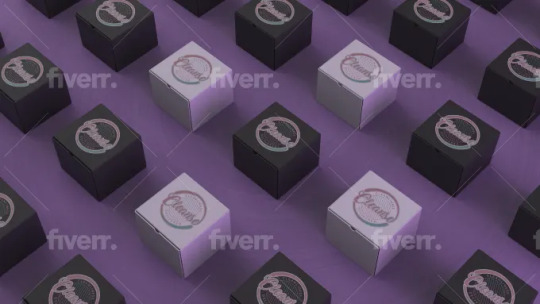
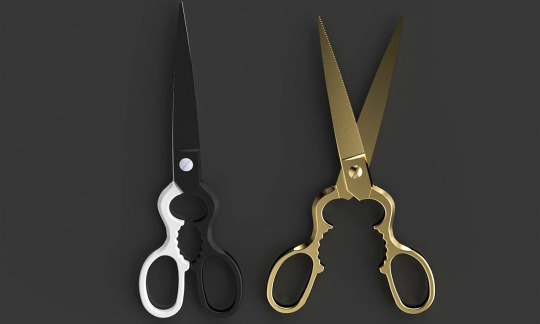
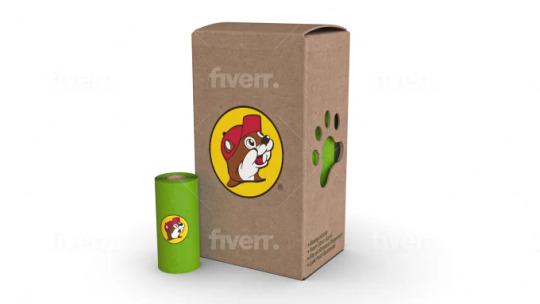
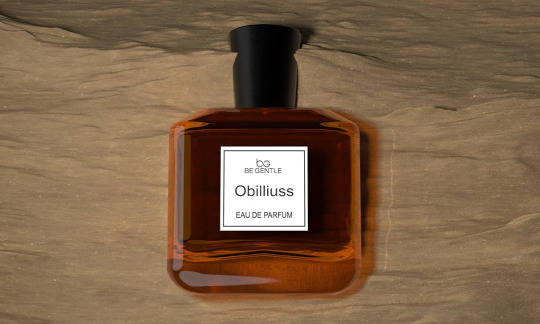
#shirts#shirt design#artist shirts#tees#tshirts#toby's beans#coffee cat#sundew farms#sunflower fox#sugarbritches#apple orchard#vintage logos#logo design#shop#merch#countrycore#farmcore#cottagecore#fashion#my art#horror#slashers#graphic design#the conjuring#the conjuring 3#the conjuring: the devil made me do it#scream#scream 1996#a nightmare on elm street#anoes
2 notes
·
View notes
Text
Persistence + Self Care as an Artist
Livestream replay
It is a balance, sometimes a war, to be productive and take care of yourself at the same time. I'm giving myself the space to be healthier, but I struggle with the cost to my creative output.
Also, I'm learning some CAD for work.
The Hardware Guy - FreeCAD for Beginners
youtube
#ArtistSelfCare #CreativePersistence #digitaldrawing #storyboardthumbnails
2 notes
·
View notes
Text
Tekla 3D Modeling CAD Services Provider in Cardiff, Australia
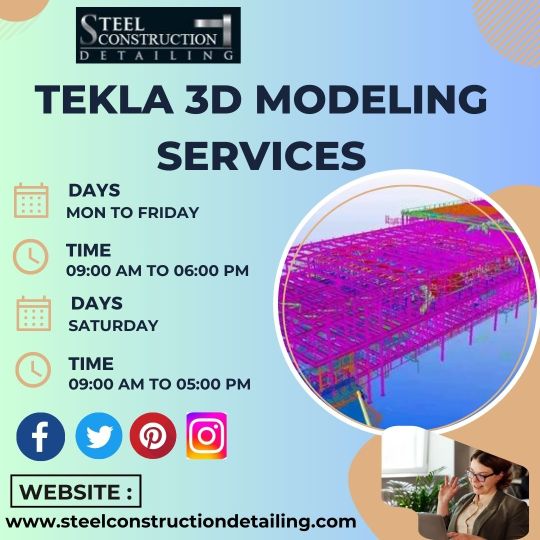
Steel Construction Detailing is leading the best Tekla 3D Modeling Consultant Services. Our Outsourcing Tekla 3D Modeling Services proves to be a strategic decision for companies looking to optimize resources and focus on core competencies. Our Tekla 3D Modeling Design and Drafting Services cater to the unique needs of every project. Our team transforms 3D models into detailed CAD drawings, comprehensively visualizing your project. So, connect with us for your upcoming Tekla 3D Modeling CAD Services. We use Tekla structure for BIM services which gives us the following output:
- Project Management - Erection scheduling - Multi-material detailing - Drawing and Reports - Conceptual design URL : https://www.steelconstructiondetailing.com/tekla.html
#Tekla3DModelingServices#TeklaSteelDetailingServices#3DTeklaModelingServices#Tekla3DModelingCADServices#Tekla3DModelingDetailingServices#Tekla3DModelingConsultantServices#Tekla3DModelingConsultancyServicesCompany#CADServices#SteelCAD
1 note
·
View note
Text

The latest render of my planned Eurorack case, the 9U×104HP design I've been planning. I tried making the pieces of the frame more clear by making the edges of each look more like plywood, added some cables — the one from the output module across to the mixer and the one providing power — and spent a really disproportionate amount of time changing the knob on the output module to be a pretty accurate facsimile of the Davies 1900H knobs I've taken to using. (I'll swap the other modules' knobs for the proper ones soon; having one good copy of the 1900H means I can reuse it in the appropriate colors all over the system.)
There's kind of a lot of apparently wasted space in there. I designed the thing around the idea that each row of modules was effectively its own volume, a cuboid of the 104HP by about six inches deep, and then making the case contain those. Now, it's hard to find a Eurorack module that's actually 6" deep — most commercial modules now seem targeted to super-shallow skiff cases — but I was concerned because I'm, you know, making most of these myself, and I think the idea was to accommodate a whole Eurocard prototyping board set in there on end. That said, the case as shown actually takes up less space than my existing 3U×84HP case when it's open, though with the angles involved that's got a lot of empty space too.
At any rate, I need to break the individual planks back out to a set of 2d CAD drawings that I can get cut at the makerspace; I believe the whole thing fits into a single half-sheet of three-quarter inch plywood, and once I confirm that I can start getting the wood and the rails. And of course I'm going back and forth on whether the case needs a lid for some degree of portability, and whether that would be just completing the implied oblong, or some shallower shape in wood or plastic. It might actually work better to have the cover be a vacuum-formed bubble of plexiglass — hmmm.
2 notes
·
View notes
Text
Get the Finest Precision with CNC Machining
In a subtractive manufacturing technique known as CNC machining, materials are precisely shaped and cut into the necessary shapes. CNC machining automates the production process in contrast to conventional machining, which mainly depends on manual intervention, leading to improved precision, repeatability, and efficiency.
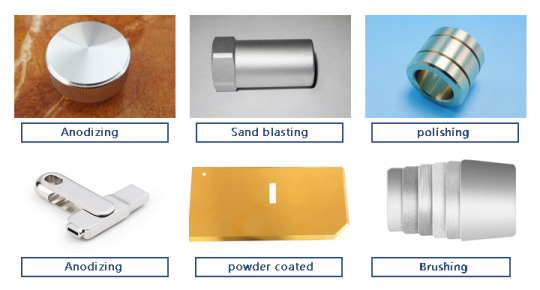
Using computer-aided design (CAD) software, a digital design is produced at the start of the process. The design acts as a guide for how the CNC machine should operate. The design is then transformed into a machine-readable format, often a G-code program, which gives instructions for the CNC machine after it is complete.
The ultimate product's needs are taken into consideration while selecting the material, which may be made of metals, polymers, or composites. By sawing the material into the required sizes, either manually or automatically, the material is prepared.
The prepared material is firmly secured to the work table of the CNC machine. The CNC program is entered into the machine's controller once the cutting tools, such as drills, mills, or lathes, are mounted during the CNC machining process.
After the machine is configured, the CNC controller reads the G-code program and gives precise instructions to the machine's motors to move the cutting tools. The cutting tools execute operations including drilling, milling, turning, and more to remove material in line with the design parameters.
Throughout the machining process, quality control procedures are used to make sure that the part's dimensions, tolerances, and surface finishes adhere to the necessary standards. To check accuracy, you could use measurement equipment like calipers, micrometers, or coordinate measuring machines (CMMs).
The advantages of CNC machining
The excellent precision and accuracy of CNC machining is well known. The process is computer-controlled, which guarantees consistent and dependable outcomes, making it perfect for applications that call for precise tolerances and complex geometries.
CNC machines can deal with a variety of materials, such as composites, metals, plastics, and wood. This adaptability makes it possible to produce a variety of components for different businesses.
Complex items may be produced fast and effectively using CNC machining. Once set up, the device can run alone with little assistance from a person. This shortens the production process and increases output in general.
It is possible to produce identical components with great repeatability using CNC prototype machining. Manufacturers can reliably make huge numbers of components because of the CNC program's ability to be stored and used again.
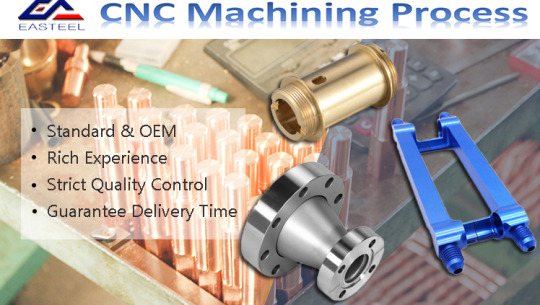
Main source: https://cneasteel.wordpress.com/
#CNC Machining#CNC Machining process#CNC Machining Techniques#CNC Prototype Machining#CNC Machining China
2 notes
·
View notes
Text
From Concept to Carton: Your Strategic Partner in Vacuum Formed Packaging with Insulink
In the lifecycle of any product, packaging plays a far more critical role than simply containing an item. It's the first impression, a robust protector against the rigors of transit, and a silent guardian of product integrity. Developing effective packaging, especially for unique or delicate items, can be a complex puzzle involving design, material science, and manufacturing expertise. This is where a strategic partner becomes invaluable. Insulink stands as a premier vacuum formed packaging parts manufacturer, offering a seamless, end-to-end "design to delivery" experience that transforms your vision into a protective reality.
The Packaging Puzzle: Why a Strategic Partner Matters:
Businesses frequently face challenges in packaging development: How do you ensure optimal product protection? What material best suits your product's specific needs and budget? How can packaging enhance aesthetics while remaining cost-effective? Without specialized knowledge and integrated services, these questions can lead to fragmented solutions, delays, and compromised quality. Packaging should be an extension of your product's quality, not an afterthought.
Insulink: Mastering the Art of Vacuum Formed Packaging – Your End-to-End Solution:
At Insulink, we approach vacuum formed packaging as an art form backed by science and precision engineering. Our comprehensive process ensures that every packaging part we manufacture is perfectly tailored, highly protective, and consistently high quality:
Collaborative Design & Prototyping: Our journey begins with a deep dive into your specific needs. We meticulously analyze your product's shape, fragility, weight, and environmental exposure. Leveraging advanced CAD design and 3D modeling, our expert team collaborates with yours, creating precise digital prototypes. This is followed by rapid physical prototyping, allowing for quick iterations and adjustments, ensuring the final design achieves optimal fit, protection, and aesthetic appeal even before mass production begins.
Material Selection & Expertise: The choice of material is crucial for vacuum formed packaging. Insulink possesses extensive expertise across a wide array of thermoplastics, including PET (known for clarity and recyclability), PVC (offering rigidity and cost-effectiveness), HIPS (for excellent impact resistance), and PP (valued for its chemical resistance and flexibility). We guide you through selecting the ideal material based on your product's requirements for clarity, rigidity, temperature tolerance, anti-static properties, food-grade compliance, and overall budget.
Precision Manufacturing & Scalability: Our state-of-the-art manufacturing facility houses advanced vacuum forming machinery operated by a highly skilled workforce. This combination ensures precision, consistency, and superior quality across every batch. From small runs for startups and specialized components to high-volume production for large enterprises, Insulink possesses the capacity and efficiency to scale seamlessly, ensuring faster turnaround times and reliable output.
Rigorous Quality Assurance: Quality is non-negotiable at Insulink. We implement a multi-stage quality assurance process that includes meticulous material inspection, continuous in-process monitoring, and comprehensive final product inspections. Our unwavering commitment ensures that every vacuum formed packaging part is defect-free, boasts consistent thickness, and delivers robust protection, safeguarding your products throughout their journey.
Cost-Effectiveness Without Compromise: Vacuum forming is inherently a cost-effective manufacturing method for custom packaging, especially for larger volumes. Insulink further enhances this advantage through optimized processes, efficient material utilization, and streamlined production. We deliver maximum value for your packaging investment, providing superior protection and presentation without inflating costs.
Timely Delivery & Logistics Support: We understand the critical importance of timely delivery to meet your production schedules. Insulink maintains robust logistical capabilities to ensure that your custom vacuum formed packaging parts arrive exactly when and where you need them, keeping your supply chain smooth and efficient.
The Insulink Promise: Partnership, Performance, Peace of Mind:
Choosing Insulink means gaining a strategic partner committed to your success. We don't just manufacture; we problem-solve, optimize, and deliver with unparalleled reliability. This partnership brings peace of mind, knowing that your products are protected by packaging that is precisely engineered, flawlessly produced, and delivered on time.
Begin Your Packaging Journey with the Experts: Contact Insulink!
Don't settle for generic packaging that fails to meet your product's unique demands. Invest in custom, high-quality vacuum formed packaging parts that offer superior protection and elevate your brand's image.
📞 Contact Insulink today: +91 90574027 | +91 7838356129 🌐 Visit us online: insulink.co.in
Insulink: Your trusted partner, transforming concepts into protective packaging excellence.
0 notes
Text
What Is SolidWorks? A Beginner-Friendly Look at the 3D Design Tool Everyone’s Talking About
Have you ever wondered how cars, phones, or even furniture are designed before they’re made? The answer lies in powerful 3D design tools—and SolidWorks is one of the best out there.

Whether you're a student, an engineer, or just someone curious about how products are brought to life, SolidWorks makes designing easy, fast, and professional. Let’s break down what SolidWorks is and why it’s such a big deal.
What Is SolidWorks?
SolidWorks is a 3D design software that lets you create, test, and improve your ideas—virtually.
Instead of sketching something on paper or building a prototype by hand, you can use SolidWorks to:
• Create digital 3D models of your product • Test how it works under pressure or motion • Make adjustments without wasting materials • Show clients or manufacturers exactly what you’re building
It’s all done inside your computer—and when it’s time to build it for real, your designs are ready to go.
What Can You Design With SolidWorks?
You’d be surprised how many things around you were designed using SolidWorks. It’s used by people in almost every industry:
• Cars and bikes – from engines to outer frames • Airplanes – including wings, turbines, and cabin parts • Boats and marine tools – for both deep sea and leisure use • Phones and cameras – everything from casing to tiny switches • Household gadgets – vacuum cleaners, lighting, fans, and more • Furniture and interiors – cabinets, chairs, and even room layouts • Medical devices – prosthetic limbs, tools, and more • Toys and games – including action figures and plastic kits
If something is built, chances are SolidWorks helped design it first.
Key Features That Make SolidWorks Awesome
Here’s why SolidWorks is a favorite tool among designers and engineers:
• 3D modeling – Draw, shape, and customize 3D objects from scratch • 2D drawings – Turn your models into clean technical drawings • Assembly creation – Combine parts into a working machine or object • Simulation tools – Test how parts move, heat up, or break under pressure • Animation – See how your final design will work in real life • Rendering – Create realistic photos of your 3D model to show off • Design sharing – Export your files to work with teams, clients, or manufacturers
All of this is done with just a few clicks and drags, using tools that are beginner-friendly but powerful enough for pros.
Who Can Use SolidWorks?
The best part? You don’t need to be an expert to start using SolidWorks.
It’s perfect for:
• Engineering students learning design principles • Product developers creating new inventions • Small business owners who want to design their own products • Industrial designers making machines and mechanical parts • Teachers and trainers offering CAD instruction • Freelancers offering design services to companies • Companies in manufacturing, electronics, automotive, and more
Whether you’re just learning or running a full production line, SolidWorks can scale to your needs.
Why SolidWorks Stands Out
There are lots of CAD (Computer-Aided Design) tools out there, but SolidWorks has built a reputation for being powerful and easy to use.
Here’s why people love it:
• Simple interface – Even beginners can figure it out quickly • Fast learning curve – Tons of tutorials and videos available • Accurate output – Get dimensions and designs ready for real-life use • Trusted by companies – Most industries accept SolidWorks files • All-in-one – Design, simulate, and test in the same space
It’s a smart choice whether you’re building a product for fun, for school, or for a full-scale company.
Real-Life Examples of SolidWorks in Action
Still not sure what SolidWorks can do? Check these examples:
• A student uses SolidWorks to model a robot arm for a science fair • A startup designs a new eco-friendly water bottle, testing for leaks • An architect uses it to create custom furniture for an office • A mechanical engineer builds a car engine that works in virtual simulation • A toy maker designs a puzzle with moving parts that snap together perfectly
From small projects to huge machines, SolidWorks helps make ideas real.
Should You Try SolidWorks?
If you’re interested in 3D design, engineering, product development, or even DIY invention, SolidWorks is absolutely worth exploring. It makes designing more fun, more visual, and way more efficient.
You don’t need to build prototypes with cardboard and glue anymore—now, you can design in 3D and test it before building anything physical.
0 notes